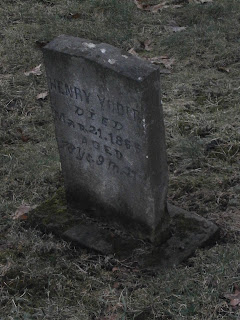"Be in the world, but not of it"
This statement essentially explains why the Amish live such plain and simple lives. Time on this earth is brief compared to the eternity that a person's soul will have in the kingdom of God. For this reason, the Amish live without attachment to material objects and modern technology. Amish cemeteries reflect their core beliefs with trademark humility.
Typically, one will see Amish cemeteries in the middle of a plot of functional farmland that is surrounded by a white fence. Death is in the midst of life in this respect. I have seen an Amish man plowing his field in spring, alongside his family's cemetery, and it's a reminder of the circle of life, for sure. It's also utilitarian, as the Amish do not see a reason to set aside specific land for cemeteries when their ancestors have been buried on their family farms for hundreds of years. Each stone will be roughly the same size, without any adornment other than a name, date of birth, and date of death.
Some Amish cemeteries even go so far as to use wooden markers. This way, they rot and deteriorate over time, reminding followers that nothing in this world is permanent or lasting. Every church district has different traditions, according to their level of strictness, etc.
When an Amish person dies, they will typically have a funeral at home. Then, a buggy will take the deceased, in their plain, pine coffin, to their final resting place. The graveside service will emphasize the glory of God, rather than the life of the deceased. After the funeral, graveside visitation isn't as common as it is with other Americans. The Amish believe that the person is gone, with God. Visiting their grave would show earthly attachment, and a lack of faith that the deceased is with God.

Hello:
ReplyDeleteI just found this blog while searching for information on the customs of the Amish regarding their cemeteries. Is this something for which you have specific, detailed knowledge?
Thanks, Bill Hart